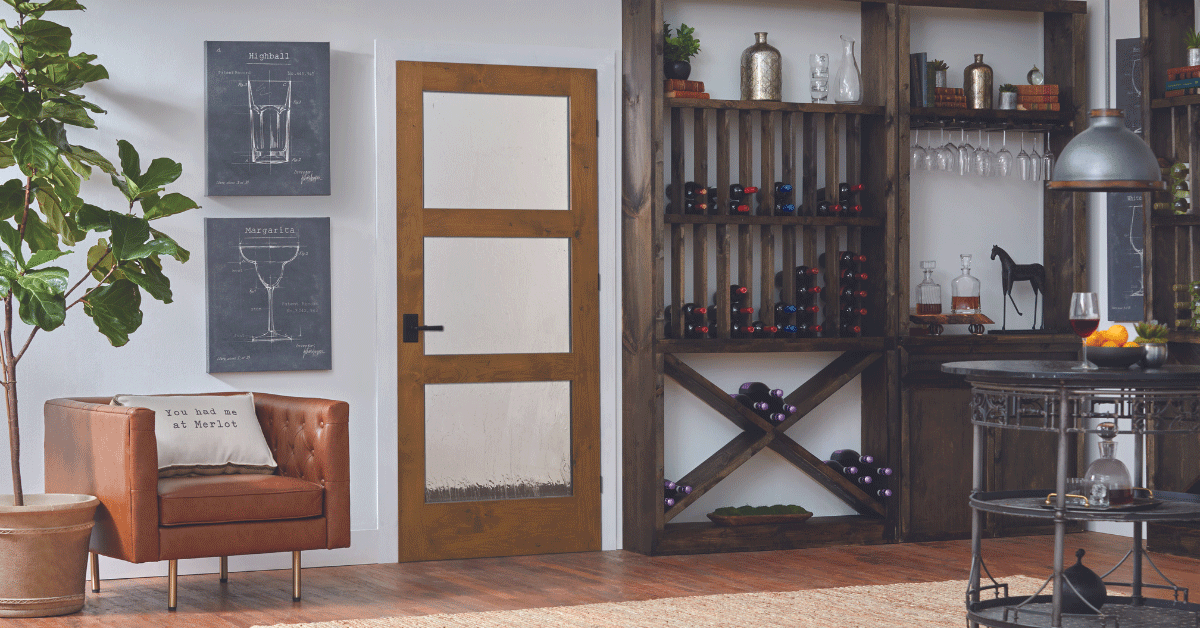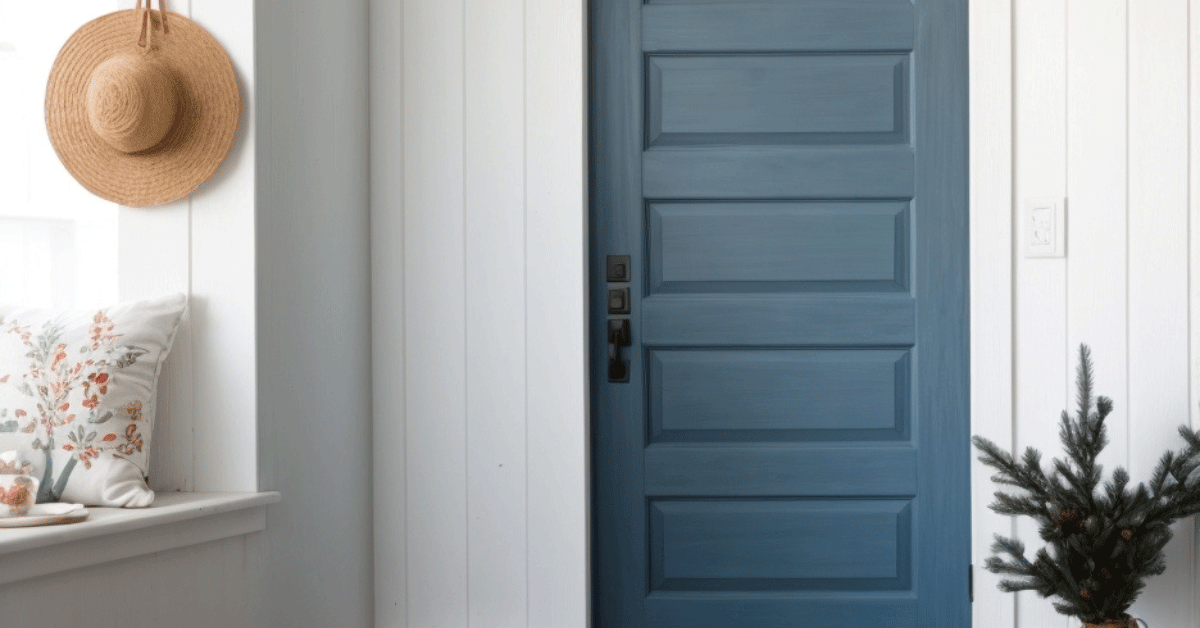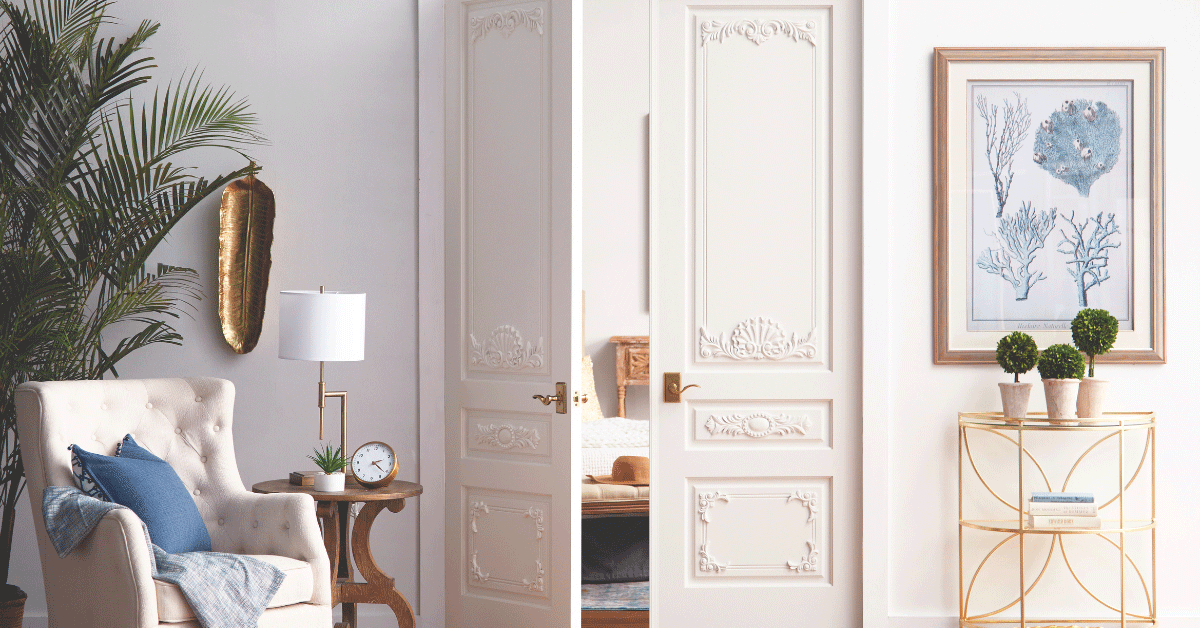Whether you are embarking on a new build or a big renovation, or you simply want to elevate the style and feel of your home’s interior with a few updates, the right interior doors can make a world of difference.
The type of interior doors you choose affects the appearance of your house and the functionality of your rooms. An interior door with glass panels, for example, can bring welcome natural light into a dark corner of your house. A good quality, solid core interior door can reduce the sound carried through the house, say from a noisy washing machine or a teenage rock band.
Before you choose your home’s new interior doors, read this post for information on the types of doors that are available and how they can affect the style and function of your home.
What’s inside your interior door?
The materials used in the core impact your interior door’s overall weight, its ability to withstand impact and the transmission of sound through the door.
Hollow core interior doors
Hollow core interior doors are generally lighter in weight than solid core doors. They tend to be more affordable, and work well in areas where sound transmission is less of an issue (a closet or pantry).
Although hollow core door materials might be sourced from wood, their relationship to solid wood is minimal, as the material is transformed into corrugated cardboard stiffeners. The door’s exterior might be composed of fiberboard embossed with wood grain or real wood veneer.
Solid core interior doors
Solid core interior doors are heavier in weight than hollow core doors and more resistant to normal wear. This type of door is beneficial in areas where more quiet and privacy are needed—bathrooms, bedrooms, laundry rooms, music rooms and home offices, for example.
Solid core doors might be made almost completely of wood, so that all elements of the door— besides hinges, hardware and knobs—are wood. That is not to say that the door is a solid slab of wood—that would be difficult to source and also more prone to cracking and splitting. These doors are made up of smaller pieces of wood fastened together, for more flexibility and better resistance to humidity and temperature shifts.
Other solid core doors have some wood content inside, but the wood has been chipped and processed into a heavy fiberboard. The resulting fiberboard helps to reduce sound flow and increase the door’s durability. The exterior of the door might be a material such as a hardwood veneer.
Where possible, look for new interior doors that incorporate earth-friendly materials. For 40 years, JELD-WEN has been recycling wood waste to help reduce the impact on our environment and maximize efficient use of materials.
The wood composites in solid core doors typically protect the door from warping, shrinking or cracking. Because a solid core door has significantly more material than a hollow core door, it is heavier, more soundproof and less likely to be damaged by regular use.
JELD-WEN® ProCore The Quiet Door® reduces sound transmission by up to 50 percent when compared to a hollow door. They come in a variety of materials to suit your preferences and are available with a 20-minute fire rating.
A solid core door will also better resist dents and dings (from hand-knocking or flying kids’ toys, for example!). With more material inside, solid core doors also offer improved insulation, for decreased drafts between rooms. JELD-WEN offers solid cores in most moulded and flush door designs, so you can get a look that suits your style with the level of sound control you need.
Create a door that’s uniquely yours
With hundreds of interior door designs to choose from, you can create a whole new look in your home just by choosing beautiful new doors.
If you like the warm and natural appeal of a wood interior door, you can choose from several classic panel designs and multiple wood species, lending your home a timeless look as well as impressive artistry.
Wood composite interior doors are also available in a variety of options to fit your design, lifestyle and budget. JELD-WEN of Canada offers moulded composite doors that are made with strong, environmentally conscious wood fiber, or carved doors that use superior router technology to create precise detailing (in over 100 designs!).
You might also choose a flush wood door, which has a flat and level surface for a clean, simple look. These doors are available in a number of warm hardwood veneers for a more cost-effective wood-look, or primed and ready to paint so you can put your own unique colour stamp on your home décor project.
More considerations when selecting the right interior doors for you
Now that you know what type of materials you want for your interior doors, you’re all set, right? Actually, there are a lot more factors to consider. Not to worry though, it’s all pretty simple. If you do get stuck, your local door expert will help you out.
Door configurations
In most cases, you’ll probably need single interior doors. Double doors are an option for wider areas and for areas where you want added drama. Bifold doors can be used in areas where you have a broader space but have found that a straight door’s swing is too wide. Often you see bifold doors used for closets. They are available in flush (woodgrain or smooth for painting) and moulded styles to match up with your other interior doors.
Door handling
You’ll want to take note of how your new interior door will function in the room when it’s opened and closed. Choose from left-hand, right-hand or center-swing doors, as well as sliding (or bypass) doors for double-door areas. Sliding doors are typically designed for closets, but can also be used to divide rooms. You could use them to open up space between a living room and a dining room, for example, closing the doors when kids are doing homework at the dining room table.
Panel type
With a myriad of panel designs to choose from, you can find doors that suit any style, from traditional to farmhouse to mid-century modern. Choose from an all-panel style, a glass panel insert or a mirrored insert. You can even opt for a louvre style, featuring slats to enhance air flow while providing privacy.
Glass Options
Once you have decided on glass panels, you’ll want to narrow your choice down further. There are many decorative glass types to choose from, giving you a custom look that suits your individual home. You can use decorative glass or opt for clear glass with grilles to create a grid design. In areas where privacy is desired, textured glass is an option.
Do you need a door slab or a pre-hung system?
You might wish to keep your current door frames, or choose new door frames to suit your new vision. It’s possible to buy only the door slab—the door itself—or to buy the whole pre-hung system, which includes the door, door frame and hinges.
When selecting new interior doors, first consider how you use your home today. More often than ever before, we are using our houses as home, school and office. Well selected doors will not only elevate the style and value of your home, they’ll also boost privacy and quiet where and when you need it.
Explore Related Posts















